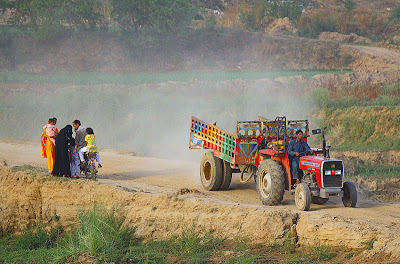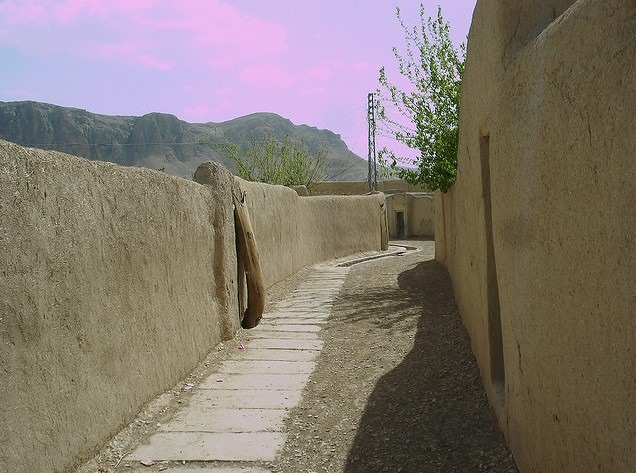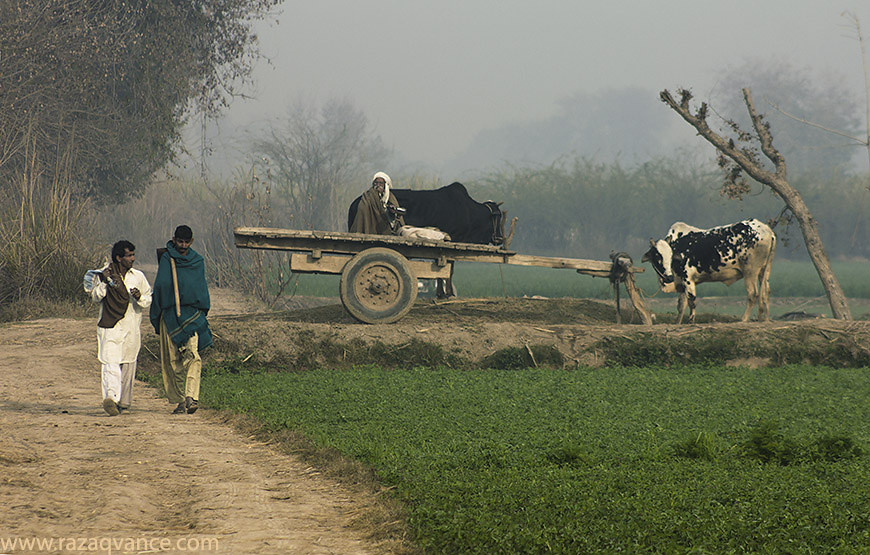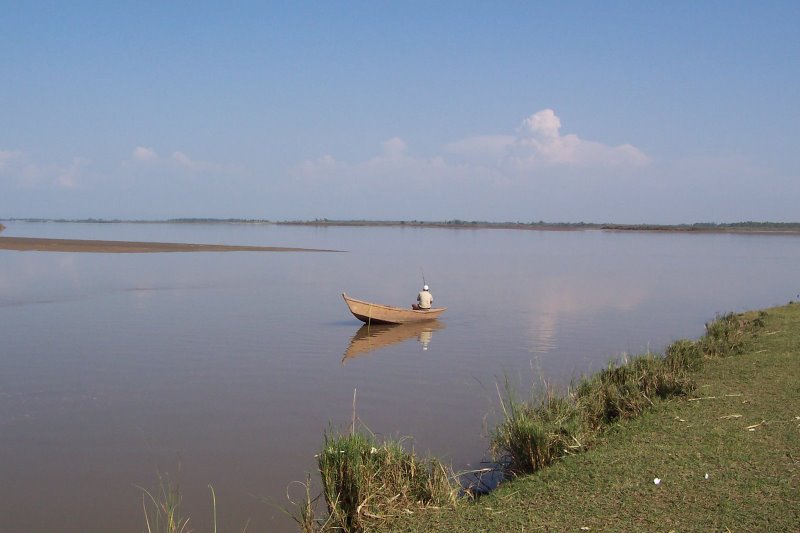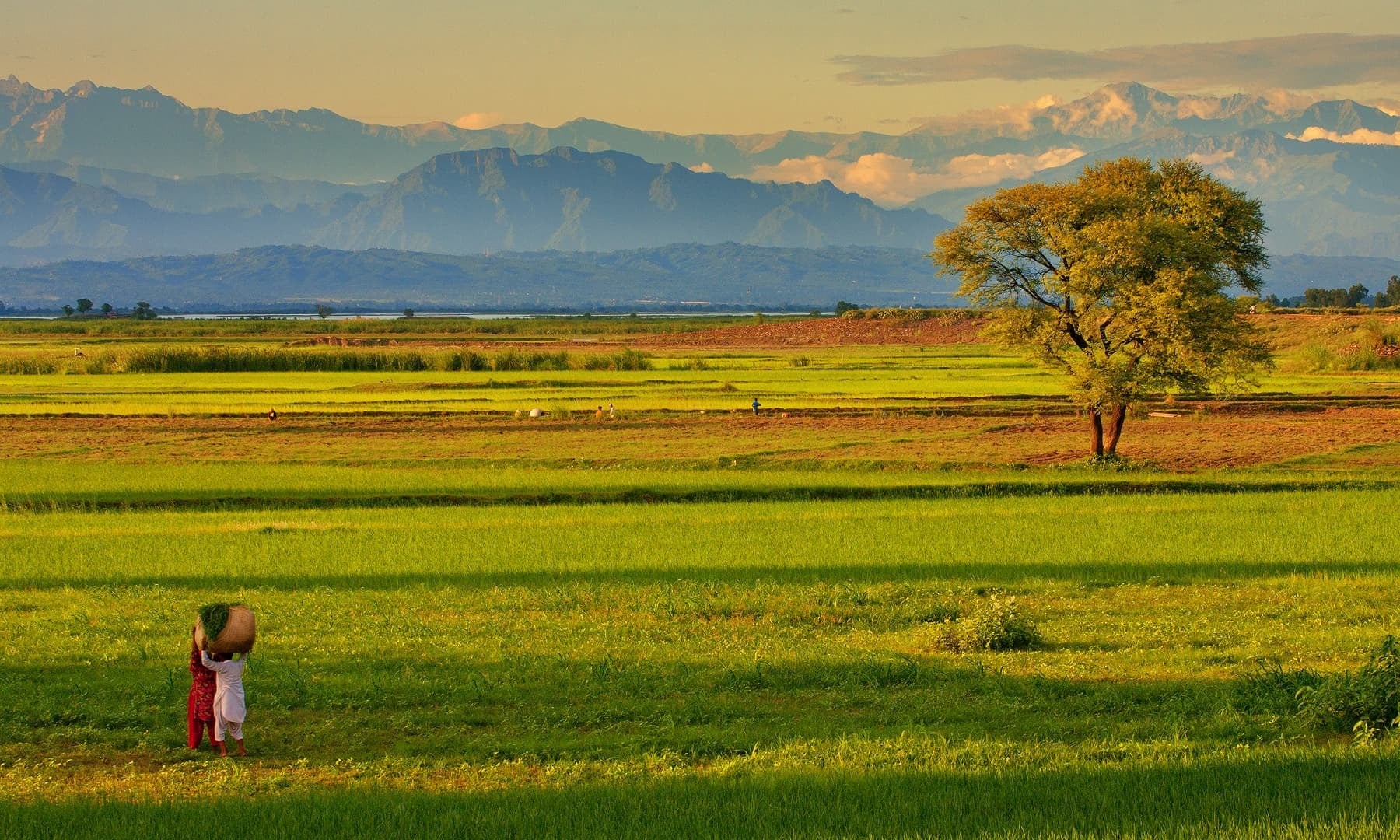ghazi52
PDF THINK TANK: ANALYST

- Joined
- Mar 21, 2007
- Messages
- 101,794
- Reaction score
- 106
- Country
- Location
Life in a Pakistani Village

A Way of Life…But More Natural
Pakistan is the cradle of Indus Valley Civilization, civilisation that is spread over more than 4000 years of history. Archaeological excavations here have revealed evidence of the meticulously planned cities of Harappa and Mohenjodaro that lived and died along the banks of the mighty Indus and its tributaries. The ancient Hindu epics narrate life between the 7th and 5th century BC which carry rich descriptions of the land and people of Indus at that time. These relics throw light on the culture and changing architectural styles of Punjab since the Harappan age.

At Taxila near Islamabad, sites associated with great Gandhara Civilization yielded remarkable relics that showcase the magnificent age of Buddhism in the region.

But along with its magnificent past, the rural life in present day Pakistan is as rich even today as it used to be before. The lush green crops which ripen in summer to yield golden harvests, fruit laden orchards which bear delicious fruits similar to those of the paradise and above all a mouth watering food that makes many a chefs to envy. The luscious fruits are so dominant in Punjab’s rural culture that a special variety of mangoes is called Samr-e-Bahisht, literally meaning the fruit of the paradise.

The Punjabi folk in Pakistani rural scene are extrovert; sociable guys who like to eat well and dress well. Even in a tight spot, a Punjabi youth would like to twirl his moustache and say “Khair ae” (am quite well”) to those who ask how he’s getting on. He learns quickly and assimilates new cultures without difficulty; family honour is sacrosanct to Punjabi’s, but in other matters they tend to be liberal. It is a matter of pride to be “up to date”. Their enterprise and capacity to work hard are legendary and it’s a deep ambition of Punjabi guys to “be one’s own boss”: many an émigré Punjabi have started life in a strange land driving a cab or working in a café and gone on to buy out the owner within a couple of years.

A few generations ago, turban was the “crowning glory” of all Punjabis, but it has now gradually disappeared from the scene. It was once a symbol of Punjab’s honour and status. At the same time it offered a protection against the simmering heat in the Punjab plains. The kurta, a long straight-cut, loose shirt teamed with pyjamas, the loose baggy shalwar, or a kind of sarong called a dhoti or tehmad makes up the traditional dress for men. Winter sees the rustic Punjabi in colorful sweaters that wives and mothers are so skilled in making. A shawl in winter and a chador in summer finish this ensemble. When the urban, educated Punjabi steps out to work he will be in shirt and pant or a suit-sartorially indistinguishable from his counterparts in Tokyo or Toronto. Back home in the evening, he is likely to be found in more traditional dress.

The traditional Punjabi shoes, called juttis or khussas retain their popularity with rural folk; they are both elegant and comfortable. Bahawalpur, Sargodha and Hazro in Attock district are famous for khussas. The women in Punjabi villages dress in shalwar topped by a kameez (a garment that can be fitted like a dress loose like the kurta) and accented by a rectangular scarf about 2.5 metres long called the duppatta . She’s fond of her sweaters, but passionately proud of her collection of woolen shawls. Gold is the weakness of Punjabi women – brides are loaded with it. The jewelers of Punjab, stock an enormous range of designs in bangles, necklaces, rings and earrings, nose-pins, ornaments to pin in the hair, anklets and toe-rings.

Culturally, Pakistan’s rural folk enjoy a seemingly happy and contented life. Not that they tend to be passive and lack initiative. On the other hand our rural folk are more energetic and struggle minded than their city dwelling counterparts.

Life in a typical Punjabi village in Pakistan, starts early in the morning. The senior village dwellers along with not so insignificant number of village youth turn to the village mosque for offering their early morning Fajr prayers. After prayer, a delicious rich breakfast awaits the village men. The breakfast itself comprises of either fresh milk (cow or buffalo’s) or a hot brew of tea with a good amount of milk and sugar.

After breakfast, the men folk move to the fields where they start performing different chores of cultivation like plowing, sowing, and harvesting depending upon the season.

Most villages in Pakistan are situated away from the noise of the city life. They are peaceful and silent places. A typical Pakistani village consists of unpaved paths and streets. Its houses are made of mud. However, with lot of young members from rural families which moved to the gulf as part of the “Dubai Chalo” syndrome, have benefitted from the petro dollars. So the villagers now build their houses from bricks and concrete though most of the village people have simple habits and limited needs.

There are green trees, vast meadows, and flowery bushes in every village. The blossoming flowers, fragrant air, the rising and setting sun all leave a healthy influence on the health of villagers. In the summer they rest under shady trees, and take bath in cool water. Women also help their men in their work along with their household. They also take care of their domestic animals such as cows, goats, hens etc. As many small villages are still void of the facilities like safe drinking water and electricity; even hospitals and schools are at long distances, life in the village requires more struggle than the relatively modern lifestyles in the cities.

A Way of Life…But More Natural
Pakistan is the cradle of Indus Valley Civilization, civilisation that is spread over more than 4000 years of history. Archaeological excavations here have revealed evidence of the meticulously planned cities of Harappa and Mohenjodaro that lived and died along the banks of the mighty Indus and its tributaries. The ancient Hindu epics narrate life between the 7th and 5th century BC which carry rich descriptions of the land and people of Indus at that time. These relics throw light on the culture and changing architectural styles of Punjab since the Harappan age.

At Taxila near Islamabad, sites associated with great Gandhara Civilization yielded remarkable relics that showcase the magnificent age of Buddhism in the region.

But along with its magnificent past, the rural life in present day Pakistan is as rich even today as it used to be before. The lush green crops which ripen in summer to yield golden harvests, fruit laden orchards which bear delicious fruits similar to those of the paradise and above all a mouth watering food that makes many a chefs to envy. The luscious fruits are so dominant in Punjab’s rural culture that a special variety of mangoes is called Samr-e-Bahisht, literally meaning the fruit of the paradise.
The Punjabi folk in Pakistani rural scene are extrovert; sociable guys who like to eat well and dress well. Even in a tight spot, a Punjabi youth would like to twirl his moustache and say “Khair ae” (am quite well”) to those who ask how he’s getting on. He learns quickly and assimilates new cultures without difficulty; family honour is sacrosanct to Punjabi’s, but in other matters they tend to be liberal. It is a matter of pride to be “up to date”. Their enterprise and capacity to work hard are legendary and it’s a deep ambition of Punjabi guys to “be one’s own boss”: many an émigré Punjabi have started life in a strange land driving a cab or working in a café and gone on to buy out the owner within a couple of years.

A few generations ago, turban was the “crowning glory” of all Punjabis, but it has now gradually disappeared from the scene. It was once a symbol of Punjab’s honour and status. At the same time it offered a protection against the simmering heat in the Punjab plains. The kurta, a long straight-cut, loose shirt teamed with pyjamas, the loose baggy shalwar, or a kind of sarong called a dhoti or tehmad makes up the traditional dress for men. Winter sees the rustic Punjabi in colorful sweaters that wives and mothers are so skilled in making. A shawl in winter and a chador in summer finish this ensemble. When the urban, educated Punjabi steps out to work he will be in shirt and pant or a suit-sartorially indistinguishable from his counterparts in Tokyo or Toronto. Back home in the evening, he is likely to be found in more traditional dress.

The traditional Punjabi shoes, called juttis or khussas retain their popularity with rural folk; they are both elegant and comfortable. Bahawalpur, Sargodha and Hazro in Attock district are famous for khussas. The women in Punjabi villages dress in shalwar topped by a kameez (a garment that can be fitted like a dress loose like the kurta) and accented by a rectangular scarf about 2.5 metres long called the duppatta . She’s fond of her sweaters, but passionately proud of her collection of woolen shawls. Gold is the weakness of Punjabi women – brides are loaded with it. The jewelers of Punjab, stock an enormous range of designs in bangles, necklaces, rings and earrings, nose-pins, ornaments to pin in the hair, anklets and toe-rings.

Culturally, Pakistan’s rural folk enjoy a seemingly happy and contented life. Not that they tend to be passive and lack initiative. On the other hand our rural folk are more energetic and struggle minded than their city dwelling counterparts.

Life in a typical Punjabi village in Pakistan, starts early in the morning. The senior village dwellers along with not so insignificant number of village youth turn to the village mosque for offering their early morning Fajr prayers. After prayer, a delicious rich breakfast awaits the village men. The breakfast itself comprises of either fresh milk (cow or buffalo’s) or a hot brew of tea with a good amount of milk and sugar.

After breakfast, the men folk move to the fields where they start performing different chores of cultivation like plowing, sowing, and harvesting depending upon the season.

Most villages in Pakistan are situated away from the noise of the city life. They are peaceful and silent places. A typical Pakistani village consists of unpaved paths and streets. Its houses are made of mud. However, with lot of young members from rural families which moved to the gulf as part of the “Dubai Chalo” syndrome, have benefitted from the petro dollars. So the villagers now build their houses from bricks and concrete though most of the village people have simple habits and limited needs.

There are green trees, vast meadows, and flowery bushes in every village. The blossoming flowers, fragrant air, the rising and setting sun all leave a healthy influence on the health of villagers. In the summer they rest under shady trees, and take bath in cool water. Women also help their men in their work along with their household. They also take care of their domestic animals such as cows, goats, hens etc. As many small villages are still void of the facilities like safe drinking water and electricity; even hospitals and schools are at long distances, life in the village requires more struggle than the relatively modern lifestyles in the cities.



